Routinely, in my avian practice, I encounter many problems associated with pet parrots that have inappropriately clipped or unclipped wings.
These problems range from accident and injury to psychological and behavioral problems. Pet parrots without wing clips (i.e. fully flighted) and pet parrots with excessively short, ‘hacked off’ wing clips are the usual victims of misadventure within the home environment.
Some pet parrot owners have a philosophical aversion to restricting the flight of their pets. They allow them to fly freely within the house. They fail to understand that the home can be a death trap to free flying pet birds. As an avian veterinarian, I see the end result of unsupervised free flight in homes. Birds without wing clips can smash into windows at speed. They fly into ceiling fans, drown in open toilets, land on hot stoves and pans of hot fat etc. They also escape through doors and windows inadvertently left open. Therefore I recommend wing clipping to prevent this type of trauma. It is the responsibility of the pet owner to protect their parrot from the hazards of the home environment. Wings should be clipped to protect the parrot from injury.
Excessively short wing clips can also cause many problems. Birds with ‘hacked off’ wing clips fly like a rock. I commonly treat young birds with open wounds to their chests as a result of falling heavily onto tiled or wooden floors because of an inappropriately short wing clip. Traumatic injury to unprotected wing tips is another common result of a ‘hacked off’, excessively short wing clip. If the primary flight feathers are cut too short, there is no protection for newly growing blood feathers on the wing tips. In such cases I have to imp feathers (add feather extensions) to protect emerging primary flight feathers and the wing tip from injury.
The main purpose of the wing clip is to prevent injury to the pet parrot in the home and also to aid in training and taming the bird. A proper wing clip allows a bird to exercise his ‘wing flapping’ pectoral muscles. This is very important in young, developing birds. It also gives the bird ‘coasting’ ability, so he doesn’t fall like a rock when attempting to fly. First wing clips should be done by your avian veterinarian or avian technician. It is important to learn the correct way to trim a bird’s wings. In our practice, we usually recommend a ‘training’ wing clip. This involves clipping approximately a third to a half of the first seven primary flight feathers of each wing. This wing clip allows young birds to glide to the ground without injuring themselves. It also prevents birds from flying up and away during training sessions.
Clipping wings is a two person job. One person should hold the bird while the other clips one feather at a time. By cutting one feather at a time it is easy to avoid cutting newly growing blood feathers. It is important to be conservative with the wing clip at first. It is always easier to correct a wing clip that is too long rather than rectify one that is too short. We also give each bird a test flight after a wing clip to see whether we need to adjust the length of the clip. A correct wing clip should enable the bird to glide downwards but not gain height.
The ‘training’ wing clip is one of the most important aids to taming and socialising the pet parrot. It immediately changes the pecking order in the bird owner relationship by preventing the bird from being dominant. It is impossible to try to tame and socialise a bird that can fly away.
It is always important to check that status of a bird’s wing clip. A well trained parrot will be accustomed to allowing the owner to hold out his wings and to check the length of the flight feathers. If some feathers have grown longer than the clipped ones, it is then a simple matter to ‘cut long the dotted line’ of the remaining clipped feathers.
However, a ‘training’ wing clip does not prevent a bird from flying away outside the house. The purpose of the wing clip is to restrict the flight of the bird within the home. Outside, a gust of wind can give the bird the lift it needs to fly away. If you want to take your pet outside, train it to accept a bird harness.
An appropriate wing clip can actually enhance your parrot’s quality of life.
PROBLEMS CAUSED BY INAPPROPRIATE WING CLIPPING
Inappropriate wing clipping (i.e. one wing cut and that excessively short, up to the coverts) is a common cause of trauma in pet birds. With this old fashioned wing clip, when the birds attempt to fly, (usually from the owner’s shoulder), they hit the ground with a thud. they have no control whatsoever over flight or landing. Carpeted floors provide some padding but many other floors (tiles, timber, vinyl) result in local trauma as the heaviest part of the bird’s body, its chest, hits the ground.
As a result of ‘hitting the deck’ the skin over the keel bone splits. The feathers hide the initial injury and owners are usually unaware that the bird has been injured. The initial injury is aggravated when the bird continues to try and fly. Repeated trauma causes haematomas (blood blisters) to form and serum and blood oozing from the wound matts into the feathers. The bird attempts to clean its feathers and the owners (and many vets) assume that the blood and injury have been caused by self-mutilation. Often, when this type of injury has been misdiagnosed, unnecessary creams and ointments have been rubbed into the general mess of blood and feathers adhering to the chest wound. To add insult to injury the birds are also collared to prevent further ‘self-mutilation’.
The appropriate treatment for the split keel injury involves a general anaesthetic, disinfection, cleaning and suturing of the wound. However, the injury will never heal if the bird continues to fly and land heavily. Feather extensions (imping) are necessary to correct the bad wing clip and to enable the bird to fly downwards in a controlled manner and land safely.
Imping, (adding feathers to broken quills) in a traditional falconry technique, dating from the Middle Ages. It was used to repair damaged feathers in hunting falcons. In modern, avian, veterinary practice, flight feathers that have been cut too short can be extended by affixing a new feather to the cut quill by means of a bamboo plug. Usually, two to three feathers can be fixed to the wing that has been inappropriate cut excessively short. When the feather extensions have been attached, the bird is then able to fly downwards in a controlled manner and land without injury and the original split keel can heal.
Imping or feather extensions can also protect newly growing blood feathers on the wing tips. All growing feathers have their own blood supply. These feathers are easy to see as the quill is pink and blood filled. Normally, when a feather moults out naturally, a new blood feather emerges. This delicate growing feather is protected by the older, stiff feathers on either side of it. When the flight feathers have been cut to the level of the coverts, there is no protection for new blood feathers. Damaged blood feathers on wing tips is another form of trauma caused by excessively short wing clips. By imping two to three new flight feathers onto cut wing tip feathers, the newly growing blood feathers are protected.
Another problems caused by inappropriate, excessively short wing clips is feather ‘chewing’. The sharp ends of cut feathers can cause discomfort and irritation to the bird. As a result they will often bite at the sharp ends and begin to strip or peal the wing vein or cut quill. The characteristic splintering effect of feather ‘chewing’ is very obvious. These ‘chewed’ feathers need to be plucked out under a general anaesthetic to encourage new feathers to grow and break the cycle of feather chewing before it becomes a compulsive habit.
All of these problems, the split keel, unprotected blood feathers and feather chewing can be prevented by an appropriate wing clip. An appropriate wing clip allows the bird to fly downwards and land safely. First wing clips should be done by an avian veterinarian or an avian technician. A ‘training’ wing clip involves clipping one third to one half of the first seven primary flight feathers on each wing. It is important to trim both wings evenly so that the bird’s flight is balanced. This type of wing clip allows young birds to fly to the ground without injuring themselves. It also prevents birds from flying up and away during training sessions. However, an appropriate wing clip does not prevent a bird from flying away outdoors. The safest way to take a bird outside is to train it to accept a bird harness.
FAQs
Wing clipping is a common practice for pet birds. There are many benefits to doing this, including reducing the risk of your bird flying away, preventing injuries from flying into windows or other dangerous objects such as ceiling fans or pots on the stove, and making it easier to handle your bird. Also, if a bird is free to fly wherever it likes in your home, it can quickly develop territorial and dominance issues if not properly trained.
How often you clip or trim your pet bird’s wings depends on a few factors. If your bird’s feathers are growing back quickly, you may also need to clip or trim more often. But as a general rule of thumb, you should clip or trim your bird’s wings every 1 to 3 months, after the beginning of their moult cycle when new feathers are growing back.
Some people worry that wing clipping will make their bird unhappy or unable to fly. However, wings should never be clipped so short that the bird cannot fly at all. When correctly done, most birds adapt quickly to having their wings clipped and still enjoy flying around their home. Clipping only a small amount of feathers from the wing tips is usually sufficient to prevent flight while still allowing the bird to glide safely to the ground if necessary.

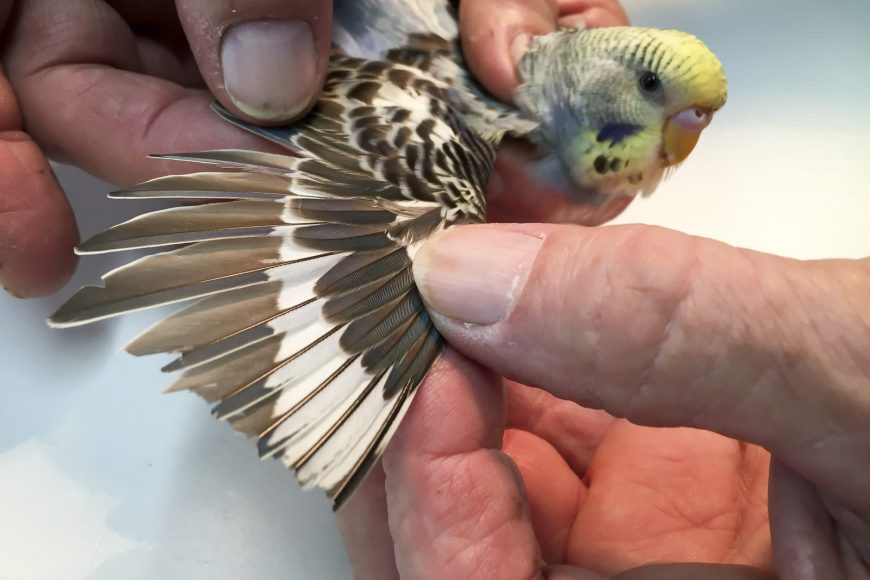
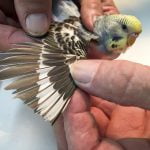
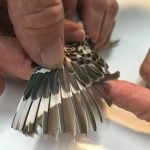

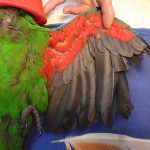
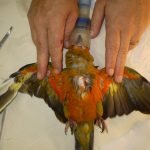
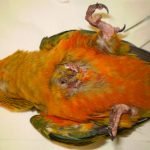
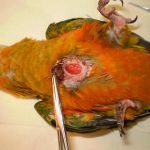


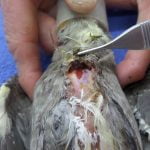
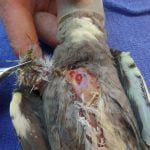
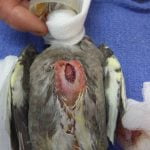
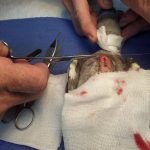



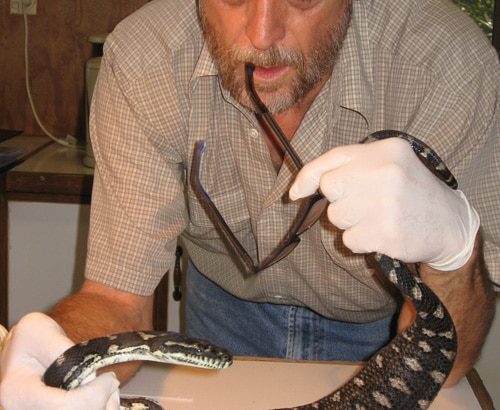
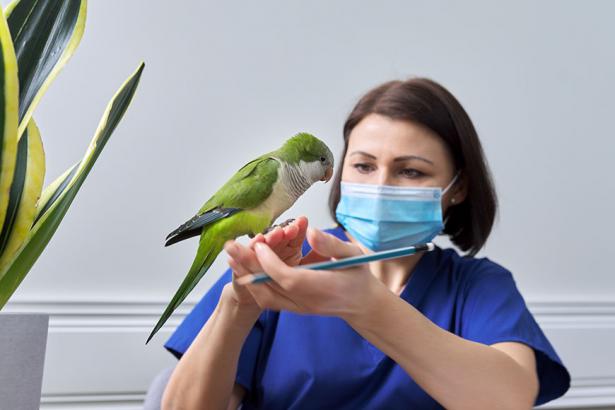
https://www.youtube.com/watch?v=a8E0dAlz0iM
This is how Vetafarm describes how to clip wings. Is this incorrect?
I have a rescue sulphur Crested Cockatoo, I’d like to clip his wings for training, he did have his wings “cut off” now they are grown back, thank you for your information, he’s having a visit to the vets
Hi if my daughters bird. Needs feather extensions what is the cost? Thanks